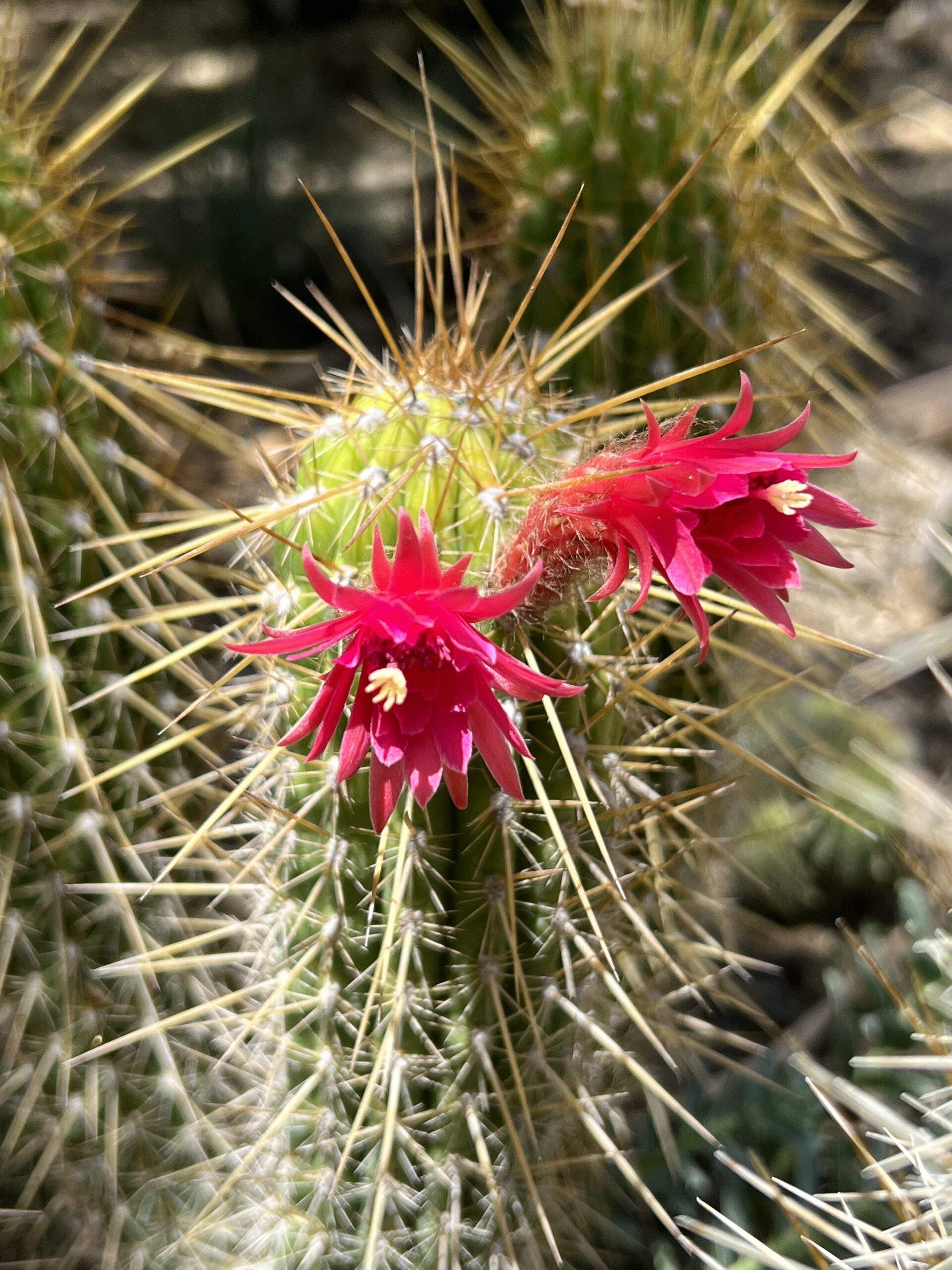The Cleistocactus is a genus that captivates the imagination, evoking the image of towering sentinels watching over the arid landscapes. With their unique morphologies and vibrant colors, these cacti stand not merely as flora but as vivid metaphors of resilience and beauty in harsh environments. Their cylindrical shapes, often likened to green candles standing resolutely against the sky, beckon both the amateur enthusiast and seasoned botanist alike to explore their unique characteristics.
The Anatomy of Cleistocactus: Nature’s Architecture
Upon closer inspection, Cleistocactus reveals a fascinating architecture. Most specimens display elongated bodies embellished with distinct ribs, which can resemble the worn pages of an ancient tome. These ribs are not only for aesthetic pleasure; they serve a vital purpose in water retention, allowing the cactus to survive in environments with scarce moisture. Spines, often delicate yet formidable, cluster in various formations along the cactus’ surface, ranging from tufted to needle-like, providing a defense against herbivores and preserving moisture.
Furthermore, the flowers of the Cleistocactus are a spectacle to behold. Emblematic of their adaptation, blooms often emerge from the areoles positioned near the apex—a strategic placement for pollinators in their arid habitat. The blossoms, frequently tubular in shape, exhibit vibrancy in hues of red, orange, and pink, creating a stunning contrast against the green backdrop. It is during the flowering season that the Cleistocactus truly reveals its heart, attracting hummingbirds and other pollinators like tiny jewels; they flutter around these living sculptures, ensuring the survival of a species that thrives amidst an unforgiving landscape.
Habitat and Distribution: The Cleistocactus’ Domain
The natural habitat of Cleistocactus spans the subtropical and tropical regions of South America. They populate the fertile valleys and arid slopes, often emerging from rocky crevices where other forms of flora might falter. Each species of Cleistocactus is adapted to its environment, showcasing an intricate relationship with the terrain. Imagine each cactus as a solitary fortress, equipped with the resilience to thrive where conditions defy more delicate life forms.
The terrain can range from the windswept altitudes of the Andes to the arid plains of Bolivia. Notably, the Cleistocactus strausii, with its impressive stature and dense spination, prefers rocky substrates that allow for excellent drainage. Other varieties, such as Cleistocactus bailey, can thrive in harsher desert conditions, where temperatures soar during the day but plunge at night. This dichotomy reveals the remarkable versatility and adaptability of the Cleistocactus, embodying a prime example of nature’s ability to flourish in adversity.
Propagation and Care: Breeding Resilience
Propagating Cleistocactus can be an engaging endeavor for enthusiasts. These cacti can be cultivated from seeds or cuttings, though each method requires attention to detail. For seed propagation, start by ensuring that the seeds are from a reputable source, as this ensures genetic health. When sowing, use a gritty, well-draining soil mix and maintain a weakly moist environment until germination occurs. The delicate balance of moisture and light is crucial; too much of either could jeopardize the seedlings’ survival. Patience is of utmost importance.
Alternatively, cuttings can be taken from healthy plants. It is advisable to allow cuttings to callous over for a few days before planting them in a suitable potting mix. Depth is a small but critical factor; only plant cuttings a few inches deep to establish roots—think of them as young soldiers being buried in the sand, awaiting the call to rise.
Overall care for Cleistocactus involves providing ample sunlight and well-draining soil—arrangements that mimic their native environments. Water sparingly, especially during the winter months when the plant enters dormancy. Overwatering can lead to rot, a fate no cactus should endure. When pruned or handled, gloves are recommended due to the formidable spines that constitute their defense mechanisms.
Common Species: Distinction in Diversity
Among the myriad species within the Cleistocactus genus, several stand out, showcasing the diverse characteristics they bring to the table. Cleistocactus strausii, commonly known as the ‘snow cactus,’ showcases incredible adaptability and a propensity for prolific growth. With its dense covering of white spines, it presents a unique visual appeal, particularly in contrast to the arid landscapes it inhabits.
Another captivating variety is Cleistocactus winteri, known widely for its stunning pink flowers. This species draws admirers not only for its robust growth but also for its visual allure when in full bloom. During the flowering season, the sight can resemble a dazzling firework display against an otherwise subdued desert palette.
The Cleistocactus hinckleyi, on the other hand, captivates with its slightly twisted, sprawling growth, forging a path much like an artist’s strokes on a canvas. Each species of Cleistocactus, while sharing a common lineage, presents as a distinct individual with varying characteristics and storylines written by the plants’ adaptations to their surroundings.
Cleistocactus in Culture: A Symbol of Fortitude and Beauty
The Cleistocactus has not only found its place in gardens and greenhouses but has also made its way into cultural representations. Its ability to thrive in conditions that would deter many signifies resilience, adaptability, and the quiet beauty of survival. The cactus serves as a reminder of the strength that lies in embracing one’s environment, flaws and all.
In art and literature, these spiky sentinels often symbolize endurance—a metaphor for overcoming adversity or navigating through life’s harsh realities. They evoke a sense of wonder, reminding us that beauty can emerge from the most inhospitable circumstances. Such symbolism adds an emotional depth to their physical beauty, creating a narrative that resonates with our shared human experience.
In conclusion, Cleistocactus is not just a genus of cacti; it embodies a philosophy. It is a visual ode to resilience in a world often marked by unpredictability and challenge. Whether one chooses to cultivate these plants or merely admire them, the Cleistocactus serves as a testament to the intriguing balance of beauty, strength, and the tenacity of life itself. Each encounter with these cacti can ignite appreciation for their uniqueness and promote a greater awareness of the delicate ecosystems they flourish within.

Leave a Comment